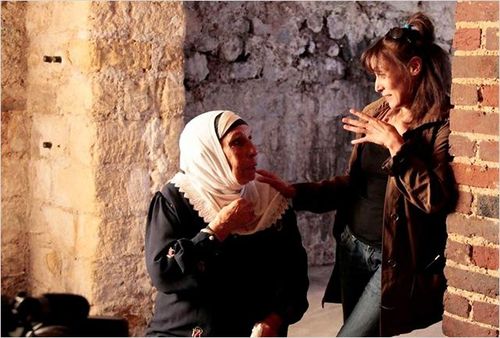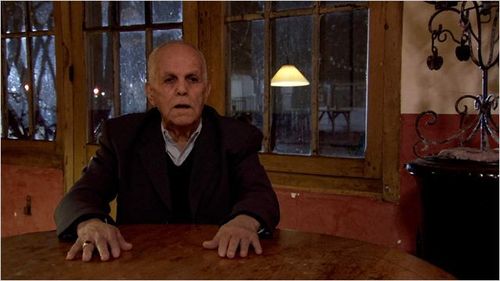At the moment of preparations for the commemoration of Algerian independence, it is essential to underscore the forgotten histories, their episodes voluntarily put aside. While the demonstrations in Sétif on 8 May 1945, the subject of Yasmina Adi’s first documentary, prepared the way for this independence, the drama around the fierce repression of the peaceful demonstration of 17 October 1961 had an impact on the negotiations leading to the Evian accords on 18 March 1962.
Recall the context: In office since 1958, De Gaulle recognised Algerian right to self-determination on 16 September 1959, which led to the attempted 22 April 1961 coup by Generals Salan, Challe, Zeller and Jouhaud. While the FLN and the French government negotiated the terms of independence, the attacks on both sides escalated tensions and police unions demanded increased resoluteness on the part of the prefecture of police, headed by Maurice Papon, the very man who led the repression in Algeria in 1945.
In her courageous desire to re-establish the historical facts, Yasmina Adi has done a truly painstaking work unearthing a variety of documents: newspaper articles, radio and television reports, previously unpublished photographs; putting them in perspective with actual eyewitness testimonies and accounts from the families of the disappeared. Most often captured in Arabic, the filmmaker enjoyed a cultural proximity that enabled her to go beyond unspoken modesty and pain, and perhaps benefiting from her position as a woman, was about to talk with the other women whose husbands had died. The very moving details of lives destroyed, a repressed memory, husbands and fathers who never returned. And then to face institutionalised contempt, which begins with denial, then falls into oblivion.
From these numerous documents the hard facts emerge: the beatings, the blood flowing, the bodies lined up, spread out, piled on top of each other, huddled together, humiliated. The testimonies reveal stories of arrested demonstrators herded into the basement of the Palais des Sports and tortured; the repression is supervised by a cold blooded apparatus where the police are free to run amok. The records show overwhelming proof of the violence that costs the lives of many demonstrators whose bodies were gradually found, often thrown into the Seine, while many others were wounded, imprisoned, even sent to Algeria, exhausted, dirty and without any belongings.
Yasmina Adi’s project, in her own words, is to « shed light », « reveal the truth » and « make it available to the public. » An endeavour for truth presupposes an objectivity far removed from the cinematic practices that to the contrary, relates a filmmaker’s particular vision. Hence one would understand that the intention is a desire to reinstate an awareness of the facts, but the means that she employs to do so must be viewed with caution.
On one hand, as always in such situations when the efficacy of visual evidence is maintained, both propaganda documentation and the news reports of the period are difficult to counter. To discern between them, Yasmina Adi uses testimonies: the human against the institution-powerful and sufficient in itself. However, specifically to show the ruthlessness of the police force, she adds audio to the photographs. It is here where the viewers are taken aback, unaware of the source of the sound, they find themselves dealing with a situation that goes from giving information for the public to see, to giving the public what they are supposed to believe. They are no longer able to discern the line between intention and facts, the message given by the filmmaker and the freedom to form their own opinion.
This unpleasant feeling is reinforced by the confines of political contextualisation. In the film the words of the Algerian victims and the propaganda of the French government meet head-on, but what about the FLN that organised the event? The recent films from Guerres secrètes du FLN en France (Secret Wars of the FLN in France) by Bensmaïl Malek (in the fourth part: the ultimate autumn of the war) to Hors-la-loi (Outside the Law) by Rachid Bouchareb, show a French FLN willing to sacrifice human lives on the basis of the Ho Chi Minh doctrine, that repression always benefits the oppressed people. They revealed the strategy adopted in high places, in full awareness of the dangers that would be brought upon the Algerians, unarmed and without backup, by provoking a large-scale peaceful demonstration that would result in a crackdown. And relying on the reactions of the French left, the FLN could then use it to influence future negotiations. These are shown in the film (Sartre, the PSU demonstration, etc.) but the FLN’s political strategy is ignored; the imposition of the curfew for « Muslims » on 5 October, which was the official reason for the protest, significantly hampered the activities of the FLN.
What « truth » does the film restore? Unquestionably, the repression and human drama, but this impasse adds to the mixture of memories that has been evoked, so that the condemnation of the historical scandal etches itself deeper into an ambiguous reminder of the past rather than to current affairs. It is essential that at the moment of the fiftieth anniversary of independence that French-Algerian history is laid bare without limitations in order to finally achieve a peaceful relationship between the two countries. However, Yasmina Adi’s film, despite the undeniable strength of its evidence and the seriousness of its archival research-which is finally available, perhaps in spite of itself, seems to go along with the present revelations about Françafrique, in the image of a past that the current governments are henceforth ready to reveal, in order to show that it is long-gone, as if the ambiguities of the practices and discourse have vanished overnight.
This translation, from French to English, by Beti Ellerson is part of a partnership with her excellent blog on african woman in cinema: [africanwomenincinema.blogspot.com]///Article N° : 10616














